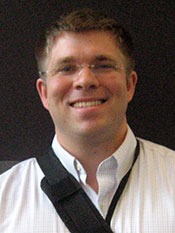Program Information
Assessment of Medical Physics Students and Trainees Interest and Awareness of Non-Clinical Careers
S Tanny1*, A Roth2 , C Peeler3 , A Rodrigues4 , J Ready5 , (1) University of Toledo Medical Center, Toledo, OH, (2) University of Wisconsin, Madison, WI, (3) MD Anderson Cancer Center, Houston, TX, (4) Duke University, Durham, NC, (5) UC Berkeley, Berkeley, CA
Presentations
SU-E-E-4 (Sunday, July 12, 2015) 3:00 PM - 6:00 PM Room: Exhibit Hall
Purpose: The majority of medical physics education programs focus on preparing aspiring physicists for a career in the clinic, which could under-represent non-clinical opportunities in medical physics. Non-clinical careers offer an opportunity to affect patient care on a worldwide scale, and increase the number of career options for graduating students. Our purpose is to evaluate the knowledge within the medical physics community of the opportunities available to aspiring physicists outside of the clinic.
Methods: We have conducted a survey of current students and trainees’ and of physicists who joined the AAPM within the past 5 years. Respondents were asked to complete questions related to their knowledge and interest in non-clinical careers. Practicing physicists were asked about the impact of non-clinical careers in medical physics.
Results: Over 150 students and 135 new physicists responded to our survey requests. 60% of students expressed that they did not feel knowledgeable concerning their non-clinical options, whereas only 32% of recent graduates stated that they were unaware of non-clinical opportunities. 68% of students expressed at least an intermediate interest in non-clinical options. Of those interested, 54% of them did not feel knowledgeable of non-clinical opportunities. Of the 110 respondents with intermediate or greater interest, 72%, 66%, 24% and 20% expressed interest to pursue opportunities in industry, academic research, health physics, and regulation, respectively. This was not reflected by the recent graduates, where only 43% of respondents considered a non-clinical career path.
Conclusions: A majority of current medical physics students surveyed expressed that they are under-informed about non-clinical career opportunities. Recent graduates indicated a higher level of awareness of non-clinical options, but many chose not to consider them for their initial career placement. More work is needed from medical physics education programs to better inform students of non-clinical options and how to prepare them.
Contact Email:


